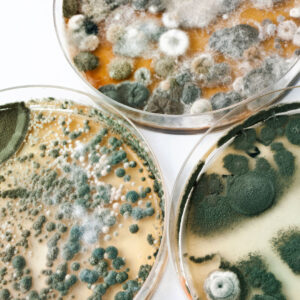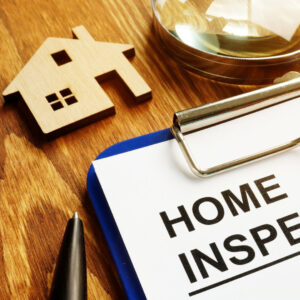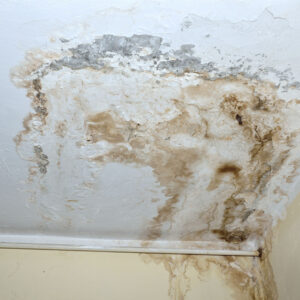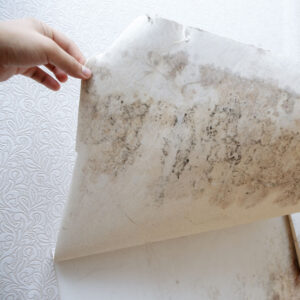When Should I Have a Mold Inspection?
When clients contact AMD Environmental, one of the most common questions is: When should I have a mold inspection?
The answer to that question is dependent on each case. There are, however, particular times when you should have a house inspected for mold.
First, let’s understand the nature of mold.
What is Mold?

Mold is a fungus made up of multicellular filaments called hyphae. Many types of mold, including black and toxic mold, grow on substances in the presence of moisture. Molds can grow on wood, paper, carpet, drywall, cardboard, or other organic materials.
Some molds are toxic to humans, and exposure to them can cause various health issues. Indoors, mold spores can cause respiratory illness and allergic reactions, posing severe threats to human health.
A mold inspection may help you avoid detrimental health effects and potentially minimize expensive mold damage to your home.
Keep these six situations in mind when you question whether or not to have a mold inspection:
1. You should have a mold inspection before you buy a new home.

Mold inspections are not part of a routine home inspection. A home inspector may be a certified mold assessor, but that does not mean environmental testing is on the checklist.
Before purchasing a new home, we suggest you hire a trained mold assessor who uses modern equipment and precise techniques. The professional should be versed in current guidelines by governing agencies. Industry knowledge is critical because mold spores emit potentially hazardous allergens.
Another reason to have a mold test before closing on a house is that mold could be hidden in the attic, especially in older homes. Attic mold assessments frequently occur because of poor bathroom ventilation out through the attic. There are signs to look for, such as previous water damage or clean-up jobs; however, mold growth is not always easy to detect visually.
Environmental testing may prolong the house closing for up to two weeks, but it gives long-lasting peace of mind.
2. You should have a mold inspection before you sell your house.

AMD Environmental recommends testing your home for mold BEFORE you put it on the market. Suspicious staining or mold growth (in less apparent areas) could hold up the sale.
Mark Newman, a certified mold assessor, advises sellers to have a mold inspection before selling a home. After decades in the field, he says, “I have seen many home sales held up because of prior flooding issues, plumbing leaks, and suspicious staining.” Newman quickly points out that “staining doesn’t necessarily mean an ongoing problem exists; however, you won’t know for sure until conclusive test results.”
Newman clarifies that stains leave a “mold footprint,” an industry term that means mold has been cleaned up but not eliminated.” Again, a mold test will confirm an ongoing problem.
3. You should have a mold assessment if a house has been vacant.

We recommend that you have a mold inspection if you plan on purchasing a house (or building) that has been vacant for some time.
Usually, people close windows and turn off air conditioning units when they leave a place for an extended period.
Vacant homes are susceptible to mold growth because airflow in the ductwork is minimal, and unmonitored humidity can lead to moisture problems. Moist conditions occur in foreclosures or vacation homes when airflow is limited. Lack of ventilation can elevate relative humidity quickly, contributing to the growth of thousands of species of mold.
Dry molds can grow on surfaces when the relative humidity is over 65%. An example of dry mold is the type of growth you see in a bathroom ceiling.
Wet molds are more dangerous to human health and can grow within 48 hours. Wet molds are in basements, behind drywall or insulation, under sinks, or chronically wet places.
4. You should have a mold inspection if water damage is evident.

You should have a mold inspection if evidence of a water event exists. Some clues are water stains at the bottom of doors or in the wall cavity. Sometimes, a more obvious sign of a water event is when part of a wall is cut away or replaced.
Water damage requires immediate attention. Black mold could grow within a week, depending on the type of mold spores and how wet the conditions are from water. Toxic black mold can appear slimy from moist conditions or dry and powdery if its water source is dried.
Other types of mold only need 48 hours to grow and spread. Even a tiny leak can lead to big problems.
5. You should have a mold inspection if mold growth is visible.

You can easily spot mold when it grows on visible surfaces.
Mold, especially toxic mold, presents in black, green, or blue shades. Not everyone encountering mold or mildew is in immediate danger, but you will want to prevent it from spreading. Mildew is a mold, so allowing it to grow could eventually affect your health.
A significant difference between mildew and mold is that mildew is not necessarily toxic, meaning it doesn’t produce mycotoxins as mold can.
AMD Environmental’s certified mold assessors will visually inspect indoor air quality for potential toxins.
6. You should have a mold inspection if someone in the home has an unexplained sickness.
Due to mold inhalation, children or adults with asthma are more vulnerable and susceptible to lung infections. Healthy people may experience runny noses, skin rashes, watery eyes, wheezing, headaches, or difficulty breathing.
Other people sensitive to environmental allergens or have asthma may be symptomatic immediately. Symptoms include runny noses, watery eyes, or asthma flare-ups.
The CDC (Centers for Disease Control and Prevention) reports that in 2004, the Institute of Medicine (IOM) found there was sufficient evidence to link indoor exposure to mold with the following:
- Upper respiratory tract symptoms
- Cough
- Wheeze in otherwise healthy people
- Asthma symptoms in people with asthma
- Hypersensitivity pneumonitis in individuals susceptible to that immune-mediated condition
Since mold spores are not visible to the naked eye (until there is growth), you may become symptomatic and not realize the source.
Who can you call?

AMD Environmental is a trusted leader in mold testing services in Buffalo, NY. We perform home mold inspections and will test for black mold, toxic mold, and indoor air quality to determine if hazards exist.

